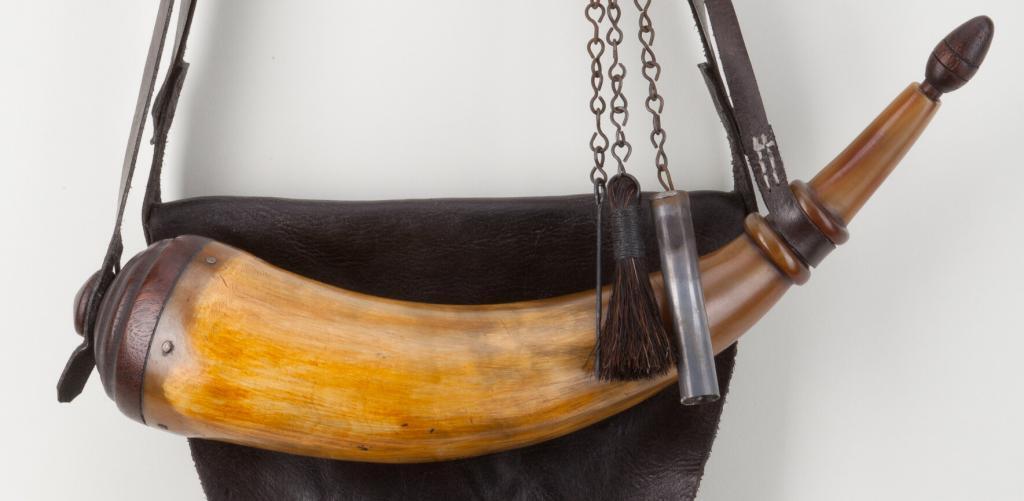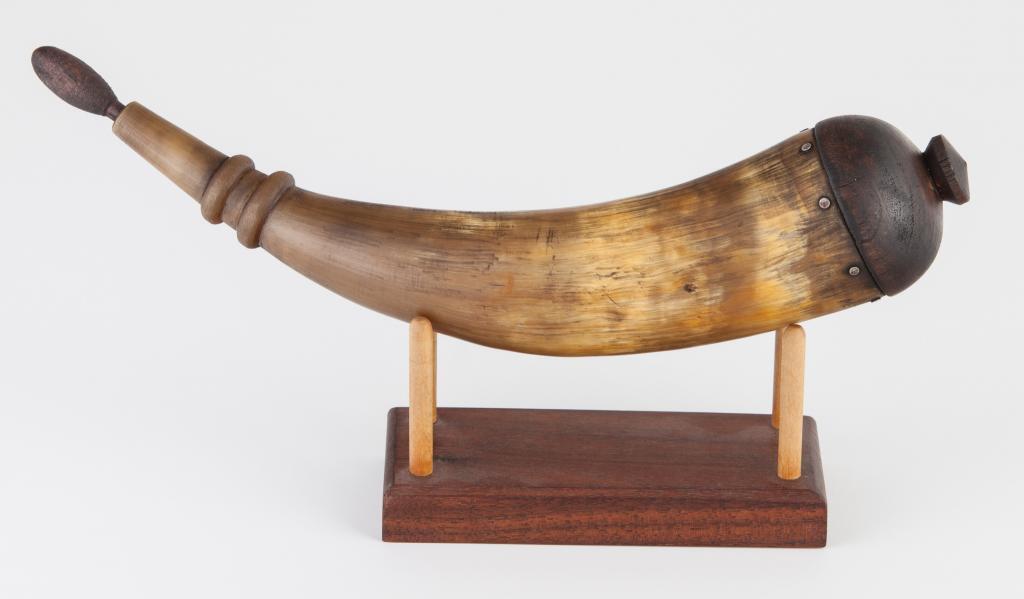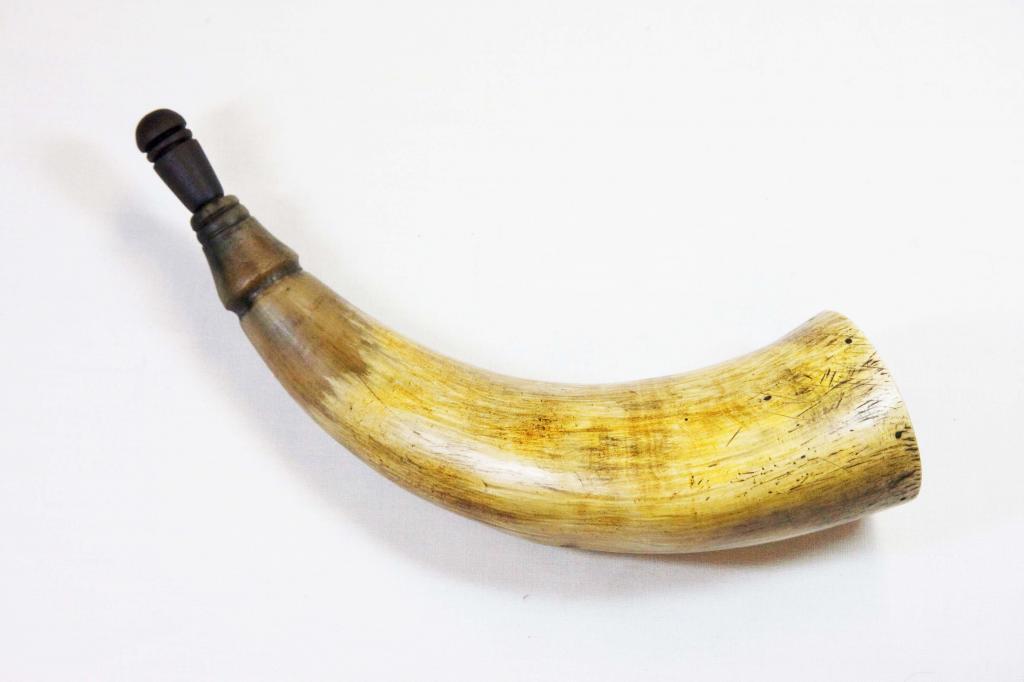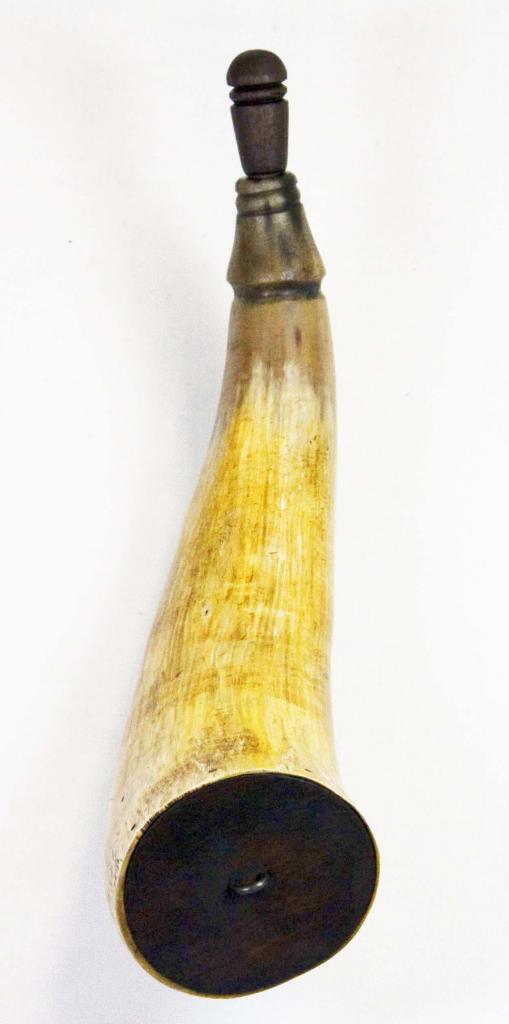The vast majority of original powder horns were as plain as they could be and still be functional. That means a flat pine (or other softwood) base plug and little or no carving of the throat; just enough work to contain powder and attach a strap. Many times a screw was used to attach a strap to the base plug. A grooved or simply reduced throat is enough to tie a strap around it. The two powder horns shown just below are based on an original southwest Virginia horn and are a little fancier than most with a turned base plug and carved rings at the throat. Even so, it is still much plainer than the carved and engraved horns from the French and Indian War. This horn could also be made with a turned and applied collar instead of the integral rings. The horn would dictate how it is approached.
Please note the raw linen cord used to attach the horn in the photo below. Cord was often found on southern outfits. The outfit show below is much more historically correct for a southern mountain rifle than many of the sophisticated shot pouches and powder horns being recreated today. Most of the original powder horns and shot pouches were very simple affairs, well worn and patched together. You will see horns completely covered in leather to patch a hole or holes rather than just throw it away. Even something as simple as a plain powder horn could not be easily replaced in the southern mountains and was highly valued.

Right or Left Hand Carry Powder Horns?
There are both right hand and left hand powder horns shown above. The question is what does that mean. It refers to the side on which you carry the horn. The tip always points forward and should wrap around your body. In other words, the tip should not jut out so that it can catch on a passing object.
Technically, a curve of the tip to the left as viewed from the top is a right hand carry horn and also from the right side of the cow. A curve of the tip to the right would technically be a left hand carry horn and from the left side of the cow. If there is no significant curve of the horn as viewed from the top, then the horn can be easily worn on either side. Most horns have so little curve it really doesn’t matter.
Sometimes a horn that is technically a left hand horn might wrap around the body better on the right hand side and vice versa. So, in describing a horn for sale, I will tell you whether a horn is technically a left hand or a right hand. Then I will tell you on which side the horn was built to be carried, if it is different. I will also try to include a photo from the top of the horn so you can see the curve for yourself. On which side you actually carry a horn, that is up to you.








